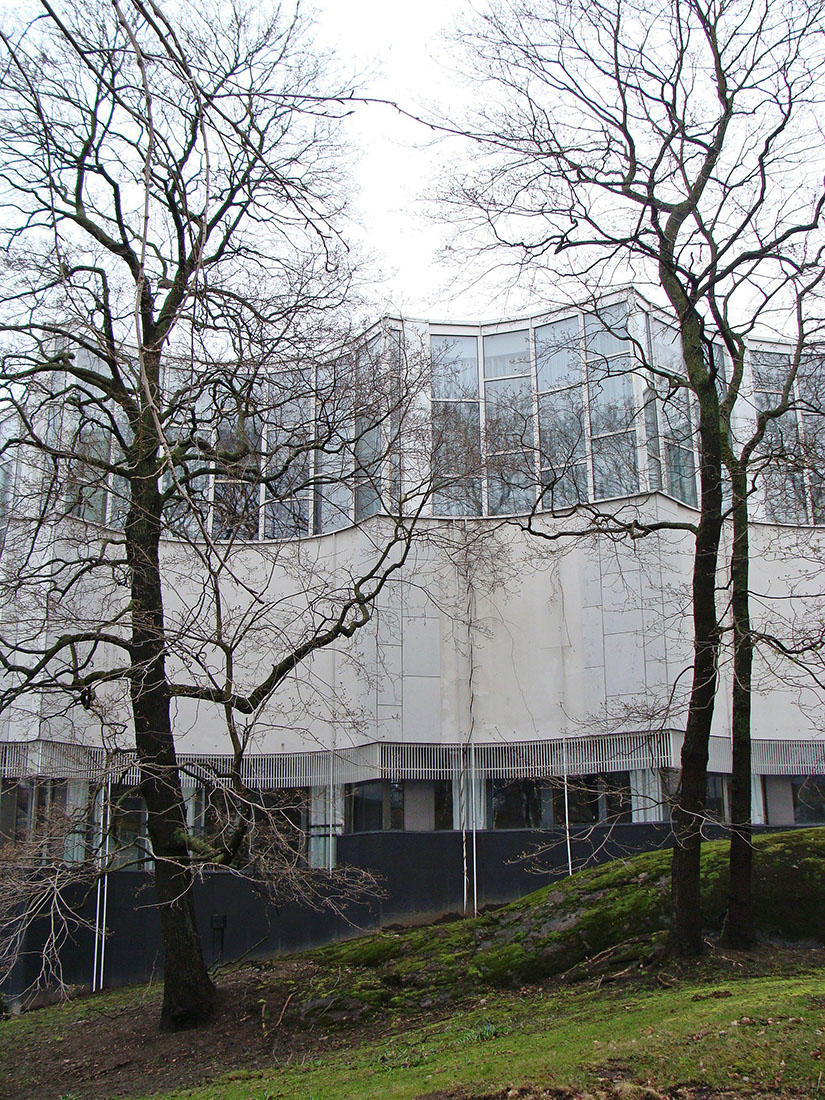 |
 |
 |
 |


Finlandia Hall
Mannerheimintie 13 / Karamzinikatu 2, Helsinki
1962 - 1975
Intended as the first part of his great centre plan, Alvar Aalto was commissioned in 1962 by the city authorities to design a concert an congress building. About nine years later, the first stage of the so-called Finlandia Hall was completed. The inauguration of the Finlandia Hall was held in 1971, and planning for a separate congress section had started even befor the main wing was completed, with the intention to improve the working conditions for conferences. The congress wing could be finished in 1975, and within a short time turned aut to be a boon. Already in the year of the opening, there was held the Conference on Security and Cooperation in Europe (CSCE), which resulted in the signing of the Helsinki Declaration.
The main characteristics of the realized building were already recognizable in the earliest plans. But there were made also some changes, for example the chamber music room was originally intended to soar above the main building mass like the main auditorium. The design of the Finlandia Hall strictly follows the mentioned centre plan by Alvar Aalto, and is located near the fan-like terrace. The main fašade was turned towards the envisioned Terrace Square, while the car entrance at the bottom level was intended to continue as a tunnel, connecting it to the other projected cultural buildings along the T÷÷l÷ Bay. At this level, the different sections of the Finlandia Hall can be reached by separate stairs. The entrance floor, opening directly into the Hesperia Park, is occupied with a generous lobby with cloakrooms and other service spaces. From there, a broad "Venetian" staircase gives acces to the foyers for the two auditoriums and the restaurant. A gallery like balcony foyer, which gives access to the balcony of the main auditorium, is reached by smaller stairs. One of this stairs is visible on the east fašade. The main auditorium has a capacity of 1750 visitors, while the smaller chamber music hall seats 350 persons. As a special feature, the chamber music hall has adjustable acoustic screens attached to the ceiling. The two music halls are completely disconnected from the concrete structure for acoustical reasons. Linked to the south end of the main volume, the congress wing contains a large foyer, conference rooms of various sizes and two large congress halls. The two halls can be combined, and offer 900 seats in the connected layout, equiped with at this time newest technical equipment.
The Finlandia Hall project is related to the Essen Opera House, which was postponed for a long time, by several similarities. For example the combination of the cobalt blue walls with the white marble, the acoustic wall sculptures and several asymmetries. On the exterior, Alvar Aalto used a large amount of the fragile Carrara marble, later in need for a costly renovation. Minor areas of the fašade were clad with dark granite. The west fašade of the congress wing features large windows, which merit special attention by their concave rounded form. With the concave design of this windows, Alvar Aalto paid respect to some of the old trees growing on the site, and at the same time enlivened the elevation.